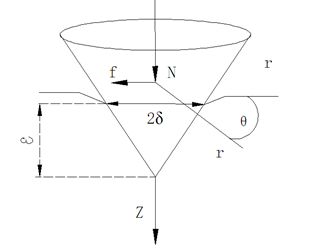Summary of Research on Mortar Wire Cutting Technology (1)
Abstract: This paper provides a comprehensive overview of the mortar wire cutting technology, focusing on its working principle, tension control systems, mortar performance, and recycling methods. It also identifies current research limitations and highlights areas for future development to support the advancement of this technology in industrial applications.
Introduction
Silicon-based materials remain the dominant material for solar photovoltaic cells, accounting for over 85% of global production. Crystalline silicon wafers, as the core component of the photovoltaic industry, play a crucial role in the manufacturing chain. Among the various cutting techniques, multi-wire cutting is widely used, with two main types: mortar wire cutting and diamond wire cutting. The former is still the primary method for silicon wafer production. It involves using a mixture of silicon carbide (SiC) particles and a cutting fluid like polyethylene glycol (PEG) to form a slurry. This slurry, under pressure from steel wires, causes plastic deformation and cracking on the surface of the silicon rod, enabling the cutting process [1]. As the photovoltaic industry continues to grow, the demand for higher-quality silicon wafers increases, leading to more in-depth research into wire cutting technologies.
This article delves into the fundamental mechanisms of mortar wire cutting, explores different types and future directions of tension control systems, examines factors that influence mortar performance, and discusses strategies for optimizing it. Additionally, it addresses the recovery and reuse of the slurry, aiming to advance the understanding and practical application of this cutting technique.
1. Research on the Cutting Mechanism
In the process of cutting a silicon rod using a mortar wire, silicon carbide particles perform a "rolling-indentation" action between the wire and the silicon rod, facilitating material removal [2]. Shu Jiqian et al. [3] have thoroughly analyzed the cutting mechanism, including the single-particle rolling-indentation model, the multi-particle indentation effect model, and the elastic-fluid effect model. Yu et al. [4] simulated the cutting force of the single-particle model, as shown in Figure 1. Based on the simulation, they derived a formula for calculating the normal cutting force N.

(1) where: ε represents the maximum cutting depth; a is the contact length; Ï… is the Poisson’s ratio; E is Young’s modulus; ζ = z / a, Ï = r / a; μ is the friction coefficient, and other terms are constants.
 (2)
(2)
 (3)
(3)
The tangential cutting force can be calculated from the normal cutting force:
 (4) where: β = cos θ is a dimensionless coefficient.
(4) where: β = cos θ is a dimensionless coefficient.

Figure 1: Schematic diagram of the force acting on a single silicon carbide particle
Furthermore, finite element analysis has been employed to study the effects of varying cutting speed and feed rate on stress and strain distribution. The results indicate that the maximum stress and strain in the cutting zone are inversely proportional to the feed rate, while both increase with higher cutting speeds.
As the photovoltaic industry evolves, continuous improvements in wire cutting technology will be essential to meet the growing demand for high-performance silicon wafers. Ongoing research in this area is critical for enhancing efficiency, reducing costs, and ensuring sustainable production practices.
Led Rechargeable Headlight,Headlamps For Hunting,Led Headlamp Rechargeable
Guangdong Dp Co., Ltd. , https://www.dp-light.com